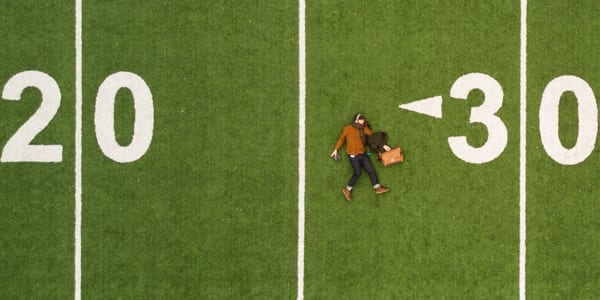 In what may be an early leader for understatement of the year, the Super Bowl is big business, and in 2018 business if booming! To which I say “Dilly, Dilly!” (but more on that later).
In what may be an early leader for understatement of the year, the Super Bowl is big business, and in 2018 business if booming! To which I say “Dilly, Dilly!” (but more on that later).
That’s right, despite all the controversy and drama swirling around the NFL, the Super Bowl, a gridiron championship game that has grown into both an annual cultural and social phenomenon, as well as an advertising showcase, has remained impervious to the factors that have tarnished the league’s symbolic shield. As brands line up to spend more than $5 million for a 30 second ad, NBC expects to generate $500 million+ in sales for a broadcast property where viewers look forward to the commercials almost as much – if not more in some cases – than the game itself.
And, with that kind of money (just for an ad buy) on the line, the pressure on brands to stand out and break through is intense. The competition to create a memorable ad that resonates with viewers is as fierce as anything seen on the field of play.
Let’s look at the 2018 marketing trends we’re seeing as the clock ticks down to kick-off…
Advertising → Branded Content → Storytelling:
In the good ole’ days, brands would announce their intention to buy a commercial in the Super Bowl and—if it featured a celebrity—trot them out to do some publicity for the spot. With the rise of social media, this has morphed into integrated, multi-channel marketing campaigns with a communications cadence leading up to its broadcast debut in the Super Bowl. As traditional advertising continues to evolve and branded content becomes more common (often fueled by social media influencers) we’re seeing the Super Bowl marketing playbook change, too. This year, Super Bowl ad “teasers” have become commonplace—and they’re not necessarily snippets of the actual ad, but rather behind-the-scenes footage or alternate takes from the “hero creative” that will run on February 4. This (relative) abundance of content is resulting in a de facto storytelling element for many of the ads, and it may pay dividends from an engagement and recall standpoint for those that do it well.
Humor Still Rules:
Per Ace Metrix, typical TV ads utilize humor approximately 20 percent of the time, while, historically, a humorous tone has been present in more than 50 percent of Super Bowl commercials. An analysis of the first 28 Super Bowl LII ads made available for preview shows that standard is holding steady in 2018. This continues to underscore various studies that suggest consumers have an expectation of being entertained by commercials that air during the Super Bowl—and by doing so brands stand the best chance of resonating with the audience.
Fewer Surprises:
It used to be that we knew the teams that were playing on Super Bowl Sunday, but we didn’t know what to expect during the commercial breaks. That time, unfortunately, has passed. By the time you read this, practically all of the Super Bowl advertisers (with a few exceptions) will have announced their creative approach, celebrity cameos, etc. within their commercials. Most will have even posted them online in the hopes of capturing as many additional eyeballs as possible, on top of the more than 100 million who will be tuning in on Sunday. From a marketing perspective, this is a smart strategy, but it is being achieved at the expense of the “surprise” many fans used to enjoy when seeing some of the smartest, most creative advertising of the year.
Provocativeness Put on Pause:
The objectification of women to sell a wide range of products, from cars to beer and snacks, has been used for years and it is has always been most noticeable—if not prevalent—during the Super Bowl. However, history has shown that Super Bowl ads are a reflection of their time, and this year is no different. With revelations of sexual harassment and inequality in the workplace dominating the news on a daily basis, it is no surprise that the strategy of “sex sells” will not play a significant role this year. No brand wants to, at best, be accused of being tone deaf, or at worst be collectively shunned by a large portion of its intended target audience.
Dilly Dilly:
The brand that gave us the ubiquitous “Whassup” 20 years ago has created another national catch phrase this NFL season in, “Dilly Dilly.” What does it mean? Your guess is as good as mine, and plenty of media outlets have offered suggestions. What we do know is that it’s going to be featured in at least one ad the brewer runs on Super Bowl Sunday; it can already be found on scores of t-shirts; you won’t be able to avoid hearing someone yell it out at the Super Bowl party you attend; and there’s even a prop bet in Vegas with an over/under of 15 “Dilly Dilly” mentions during the game. Get ready for it to be the punchline in a steady stream of memes during and following the big game.
So why does all this matter? Well, because the research tells us it does… according to Instant Logic, 47 percent of Americans (which translates to almost 50 million viewers on Super Sunday) think watching the commercials is more important than watching the actual game and, on the other side of the equation, almost 25 percent of last year’s Super Bowl advertisers spent at least 10 percent of their annual marketing budget on that game alone. In the world of brand marketing, the biggest bets happening on Super Bowl Sunday have nothing to do with the final score.



